🎣 Wobbler Lure Mastery: Dive Into the World of Fishing! 🎣
Hello, avid anglers! 🐟 Ever wondered why some fishermen seem to have the ‘magic touch‘ when it comes to reeling in those impressive catches? Their secret might just be the wobbler lure. If you’ve been looking to elevate your fishing game, you’re in the right place!
What’s a Wobbler Lure? 🤔
A wobbler lure is a type of fishing bait that mimics the movement of prey in the water. Its unique design and motion attract predatory fish, making it a go-to choice for many professionals.
Why Use a Wobbler? 🏆
✅ Realistic Movement: Its wobbling action mimics real prey.
✅ Versatility: Suitable for both freshwater and saltwater fishing.
✅ Attract Bigger Fish: The flashy designs and movements can lure in larger catches.
Ready to dive deeper? 🌊 Let’s unpack the nuances of fishing with a wobbler lure, ensuring that your next fishing adventure is nothing short of spectacular! 🎉🐠🚣♂️
🎣 Diving Deep into the Wobbler Lure Revolution 🎣
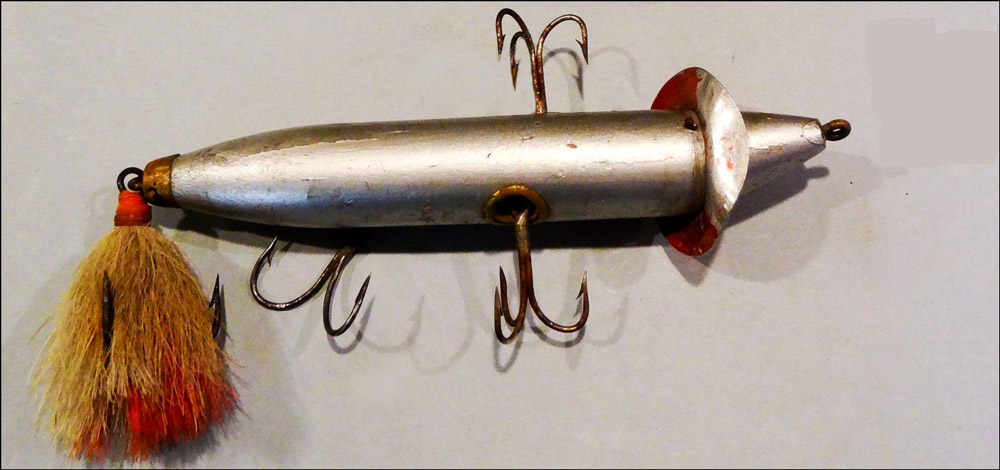
In the ever-evolving world of fishing, it’s a constant race to discover the next big thing – the bait or technique that redefines success by the shoreline or out on the boat. Amid this vast ocean of innovation, the wobbler lure has emerged as a force to be reckoned with, capturing the attention of novices and seasoned pros alike.
Why the Wobbler Hype?
The contemporary fishing community is abuzz with tales of the wobbler’s prowess. But why has it risen meteorically in popularity? 🚀
| Feature | Explanation |
|---|---|
| The Imitation Game | Wobblers mimic the movement of prey fish, offering a lifelike representation. As it moves in the water, it becomes an irresistible, tantalizing meal for predators. |
| Versatility on Display | Unlike traditional lures that excel under specific conditions, wobblers showcase adaptability in varied environments: fresh or saltwater, calm or turbulent waters. |
| An All-Rounder | While many lures are species-specific, the wobbler lure appeals to a wide range of fish, from freshwater bass to coastal snook. It’s designed to attract them all. |
In essence, the wobbler lure isn’t just another bait; it’s a testament to how combining innovative design with a deep understanding of aquatic life can elevate the fishing experience. Whether you’re looking to up your angling game or seeking a more dynamic lure, the wobbler promises not just a catch, but a thrilling chase. 🐠🏆
🌊 A Journey Through Time: The Wobbler’s Origin and Evolution 🕰️
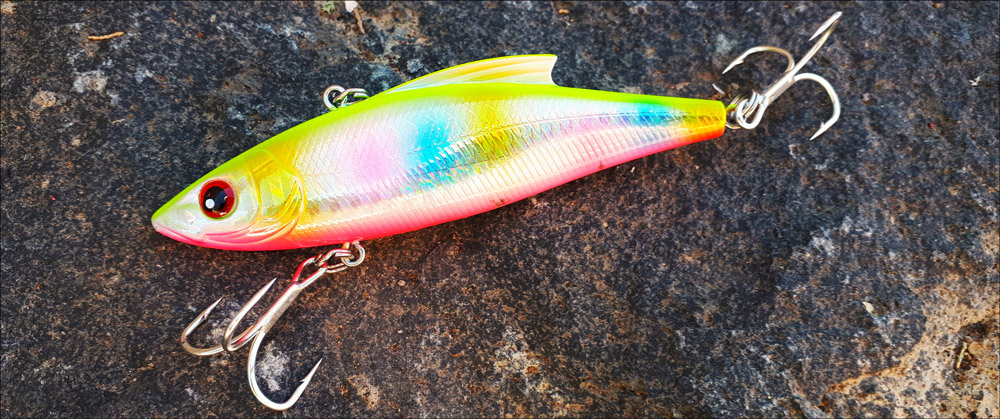
The world of fishing lures is vast and varied, but few have stood the test of time and innovation like the wobbler. Let’s dive into its fascinating history and the transformative journey it has taken over the years.
📜 The Birth of the Wobbler
The inception of the wobbler lure dates back several decades. It was born out of a necessity to mimic the erratic movement of injured fish, which predatory species find irresistible. Early iterations were crafted meticulously by hand, primarily using wood. These pioneer wobblers, while primitive, were a testament to the ingenuity of anglers eager to simulate nature as closely as possible.
🛠️ Evolution Through the Ages
As the years rolled on, the wobbler underwent a series of design changes:
| Feature | Explanation |
|---|---|
| Material Innovations | Initially crafted from wood, the evolution of wobblers introduced more robust and diverse materials. Present-day models are made of metals, plastics, and high-tech polymers, ensuring durability and versatility in various water conditions. |
| Enhanced Hydrodynamics | Over time, the wobbler’s shape and contouring have been refined. Modern designs optimize water movement, producing more enticing actions and attracting a broader range of fish species. |
| Adaptive Coloration | Technological advancements in paint and printing have bestowed wobblers with highly realistic patterns and colors. Anglers can now select the ideal lure tailored to the specific environmental conditions and targeted fish species. |
| Incorporation of Technology | Cutting-edge wobblers have begun integrating features like LED lights and sonic vibrations. These additions boost their effectiveness, especially in low visibility settings like murky waters or during nighttime angling adventures. |
The Modern Wobbler: A Symbol of Progress
From humble wooden beginnings to the technologically advanced lures of today, the wobbler has continuously evolved, reflecting both the changing needs of anglers and the relentless march of innovation. It stands as a shining example of how tradition and progress can harmoniously coexist in the realm of fishing. 🎣✨
🎣 Decoding the Wobbler Lure: Anatomy and Design Dynamics 🛠️
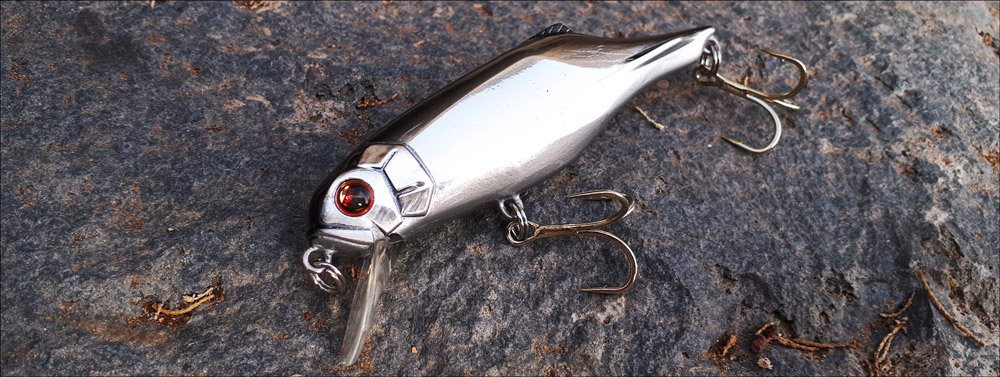
The art of angling is as much about understanding the tools of the trade as it is about the skill of the fisherman. One of the most intriguing tools in the angler’s arsenal is the wobbler lure. Let’s dive deep into its anatomy and design to grasp its undeniable allure.
📐 Shape & Size: More Than Meets the Eye
The diversity in the shapes and sizes of wobbler lures is no mere coincidence. Each has been crafted with a specific purpose in mind:
| Wobbler Type | Description | Characteristics & Uses |
|---|---|---|
| Slim & Long | Mimics slender baitfish | Appeals to species like pike and walleye due to their rapid, side-to-side motion. |
| Short & Stout | Resembles crustaceans or larger baitfish | Favoured by bass and similar predators. Notable for their pronounced wobble, imitating the movement of larger prey or crustaceans. |
| Depth Divers | Characterized by a pronounced lip | Designed to dive deeper into the water, they target bottom-feeding species by reaching where standard lures might not. |
🔬 Material Matters: Plastic, Wood, and Metal
The material of a wobbler greatly influences its performance:
| Wobbler Type | Description | Characteristics & Uses |
|---|---|---|
| Slim & Long | Mimics slender baitfish | Appeals to species like pike and walleye due to their rapid, side-to-side motion. |
| Short & Stout | Resembles crustaceans or larger baitfish | Favoured by bass and similar predators. Notable for their pronounced wobble, imitating the movement of larger prey or crustaceans. |
| Depth Divers | Characterized by a pronounced lip | Designed to dive deeper into the water, they target bottom-feeding species by reaching where standard lures might not. |
🌈 Color & Patterns: A Palette of Possibilities
The appearance of a wobbler is pivotal in attracting fish:
| Wobbler Type | Description | Characteristics & Uses |
|---|---|---|
| Slim & Long | Mimics slender baitfish | Appeals to species like pike and walleye due to their rapid, side-to-side motion. |
| Short & Stout | Resembles crustaceans or larger baitfish | Favoured by bass and similar predators. Notable for their pronounced wobble, imitating the movement of larger prey or crustaceans. |
| Depth Divers | Characterized by a pronounced lip | Designed to dive deeper into the water, they target bottom-feeding species by reaching where standard lures might not. |
The wobbler lure, with its intricate designs and well-thought-out anatomy, is a testament to the deep understanding of fish behavior and preferences. From its shape to its material and color, every aspect serves a purpose, and understanding these nuances can be the key to unlocking your next big catch. 🐟🔑
🎣 Mastering the Wobbler: Techniques Every Angler Should Know 🏆
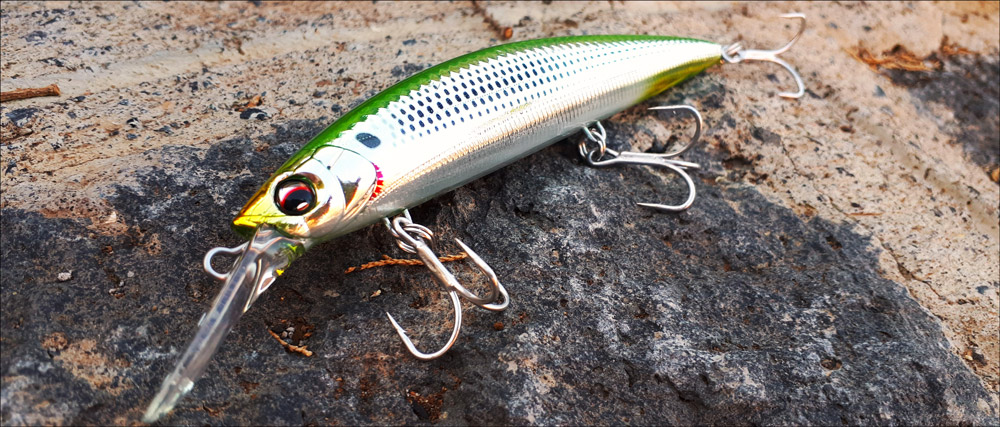
Fishing with a wobbler isn’t merely about tossing it into the water and hoping for the best. It’s an art, and like any art form, it requires technique, finesse, and understanding. Here are some key techniques that can elevate your wobbler fishing game:
1️⃣ Casting Techniques: Where Precision Meets Power
🟣 Importance of the Cast: A good cast sets the stage. It ensures that your wobbler reaches the desired spot and initiates a promising start. An inaccurate cast might scare away potential catches or position the lure ineffectively.
Tips for Accurate Casting:
- Gauge the distance and direction before releasing.
- Align your body towards your target.
- Use your wrist’s snap for additional accuracy and distance.
Regular practice makes perfect!
🟢 Maximizing Wobbler Movement: Ensure that the rod tip is aligned correctly post-cast. The angle affects the wobbler’s initial dive and subsequent movement. Adjust based on desired depth and action.
2️⃣ Retrieving Methods: Dance of the Lure
🔵 Steady Retrieve: A consistent, smooth reeling, emulating a swimming baitfish. Works well when fish are active and chasing prey.
🔵 Twitching: Intermittent jerks on the rod tip followed by pauses. This erratic movement mimics an injured fish, often proving irresistible to predators.
🔵 Trolling: Deploy the wobbler behind a moving boat. The boat’s movement imparts a steady action to the lure, covering vast areas of water effectively.
3️⃣ Depth Control: Navigating the Layers
Wobblers can effectively target fish at varying depths:
🟡 Surface & Shallow: Utilize buoyant wobblers and keep a higher rod tip. Perfect for topwater predators or when fish are feeding near the surface.
🟡 Mid-Depth: A balanced approach. Cast and let the wobbler dive for a few seconds before starting the retrieve. Adjust rod tip height accordingly.
🟡 Deep Dive: Employ wobblers with a pronounced lip or additional weight. Cast, allow a longer dive time, and keep the rod tip low to maintain depth during retrieval.
Wobbler fishing is a blend of knowledge, technique, and intuition. While the lure itself is designed to attract, how you deploy it makes all the difference. Understand the water, read the fish, and let your wobbler do the dance. Here’s to many successful catches! 🍻🐟
🌊 Selecting the Right Wobbler: Match the Conditions for Ultimate Success 🎣
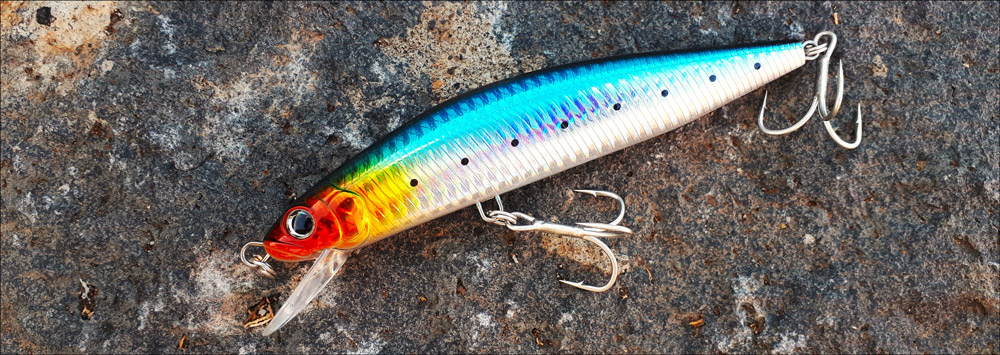
Every fishing trip is unique. Whether it’s the mood of the waters, the play of light and shadow, or the seasonal shifts, conditions differ. Just as you wouldn’t wear sandals to a snowy peak, you shouldn’t use just any wobbler in all fishing conditions. Let’s break down how to choose the ideal wobbler based on various circumstances:
1️⃣ Water Clarity: Seeing Through the Waters
🐌 Clear Waters: In such pristine conditions, fish can get a good look at your lure. Go for wobblers with:
- Natural hues (browns, greens, silvers) to mimic real fish.
- Subtle movements, lest the lure appears too animated.
🐌 Murky Waters: When visibility is limited:
- Bright & bold colors (oranges, yellows, neon shades) can make your lure stand out.
- Flashy patterns and additional action can attract fish to your lure from a distance.
2️⃣ Water Temperature: Feeling the Heat (or Cold!)
🐡 Cold Waters: Fish tend to be more lethargic in colder temperatures.
- Opt for wobblers with a slow, deliberate action.
- Subdued colors can be more effective as fish aren’t typically in an aggressive mood.
🐡 Warm Waters: As the mercury rises, so does fish activity.
- Wobblers with vibrant patterns and quick movements can trigger bites.
- Don’t shy away from experimenting with various shapes and actions.
3️⃣ Fishing Spot: Every Locale is Unique
🦈 Lakes: Generally calmer waters.
- Natural hues and gentle wobbles are often effective.
- Consider depth divers for those deep lake pockets.
🦈 Rivers: Currents play a significant role.
- Short & stout wobblers can resist strong flows and remain on course.
- Brighter colors can stand out against the often dark riverbeds.
🦈 Coastal Areas: Salty and vast, with a diverse fish population.
- Metal wobblers can endure the saline environment and reflect light brilliantly.
- Depth divers and flashy patterns can attract larger coastal predators.
Selecting the right wobbler isn’t just about personal preference. It’s a strategic decision, influenced by the environment you’re fishing in. By aligning your wobbler choice with the conditions at hand, you enhance your odds of landing that prized catch. Remember, in the game of fishing, knowledge is the ultimate lure. 🐠🎉
🎯 Matchmaker on the Water: Wobblers for Every Fish Species 🐟
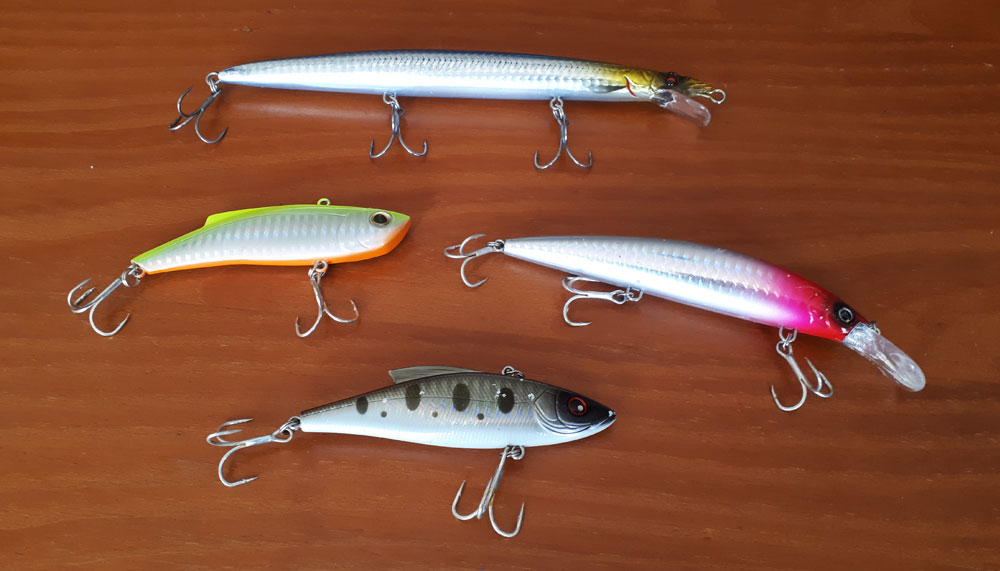
One of the joys of fishing is the vast array of species awaiting the skilled angler. Each fish has its preferences, quirks, and behaviors, making the challenge ever more intriguing. By matching your wobbler to your targeted species, you’re not just fishing; you’re strategizing, setting the stage for that exhilarating tug on the line. Let’s delve into the world of fish-specific wobblers:
🏞️ Freshwater Targets: The Lake and River Giants
🦚 Bass: The Freshwater Kingpin
- Lure Profile: Short & stout wobblers, often in crayfish or shad patterns.
- Colors: Natural shades with occasional pops of yellow or red can be effective, especially during spawning season.
- Tips: For aggressive bass, don’t be afraid to use wobblers with a pronounced action.
🦚 Trout: The Elusive Beauty
- Lure Profile: Slim & long wobblers, resembling minnows or small insects.
- Colors: Browns, greens, and silvers with some flash to mimic natural prey.
- Tips: Use subtle movements, especially in clear streams or lakes.
🦚 Pike: The Freshwater Predator
- Lure Profile: Larger, more robust wobblers to attract this aggressive predator.
- Colors: Flashy patterns, bright greens, and silvers to replicate baitfish.
- Tips: Pike are ambush predators, so make your wobbler’s movement erratic to mimic injured prey.
🌊 Saltwater Targets: The Coastal Warriors
🌳 Snook: The Mangrove Master
- Lure Profile: Mid-sized wobblers, often mimicking mullet or other coastal baitfish.
- Colors: Silver, white, with a touch of green or yellow.
- Tips: Snook often lurk in shadows, so a wobbler with some flash can draw them out.
🌳 Redfish: The Shallow Water Fighter
- Lure Profile: Short & stout wobblers, resembling crabs or shrimp.
- Colors: Browns, oranges, and golds to mimic crustaceans.
- Tips: Redfish often feed near the bottom, so a wobbler that can dive or sink can be beneficial.
🌳 Striped Bass: The Coastal Cruiser
- Lure Profile: Slim & long, mimicking baitfish like herring.
- Colors: Silvers, blues, and whites to reflect the shimmering scales of their prey.
- Tips: These hunters are attracted to movement, so ensure your wobbler has a lively dance in the water.
The art of fishing is all about understanding – not just of the waters but of the fish themselves. By tailoring your wobbler to your targeted species, you become part angler, part tactician. The result? Greater success, more exhilarating experiences, and stories that last a lifetime. Go forth and match-make your way to fishing glory! 🏆🌊
🎣 Tackle Essentials for Wobbler Fishing in the Ocean 🌊
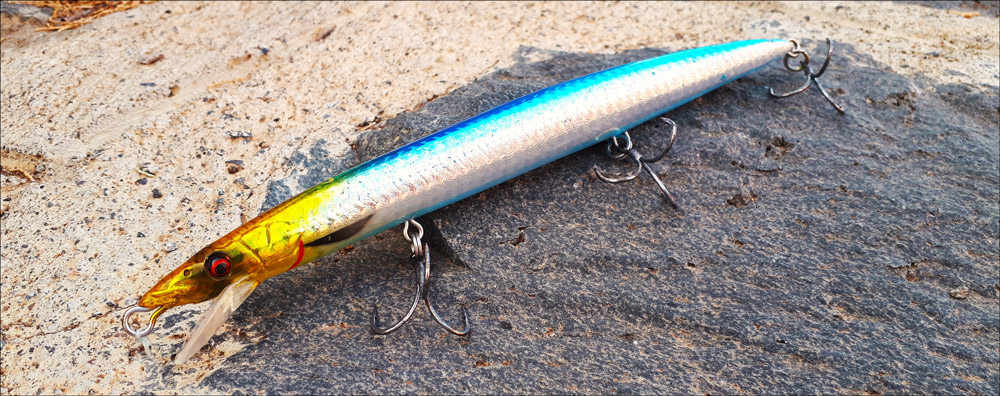
Delving into the world of wobbler fishing, especially from the picturesque shoreline or rocky terrains of the ocean, can be both thrilling and challenging. But fret not, novice anglers! With the right gear, understanding of the environment, and a sprinkle of patience, you’re all set to land some of the ocean’s most formidable predators, from the swift Atlantic Sierra to the sharp-toothed Barracuda. Let’s equip you with the knowledge to make the right choices:
📍 Decoding the Fishing Spot
- Body of Water: The vast ocean.
- Targeted Species: Predators like Atlantic Sierra, Barracuda, Pejerrey, Hurel, and others.
- Season & Time: Depending on your region, seasons might dictate fish activity. Aim for daylight hours, specifically at dawn or dusk for the best results.
- Location Specifics: Opt for depths ranging from 2 to 8 meters, casting from the shore or rocks.
🎨 Selecting the Perfect Wobbler
- Weight: Between 22-40 grams.
- Size: Ranging from 80mm to 130mm.
- Design: Stick to the standard form. (Refer to the provided photo for clarity.)
- Color Palette: Light colors dominate – think yellows, silvers, blues, and grays.
- Budget Range: $6 to $30, ensuring both affordability and quality.
🎣 Rod Considerations
Opt for the Goture Xceed 1004 M-S 4 Sections Travel Fishing Rod.
- Length: Spanning 2.5 meters to 3.5 meters.
- Lure Weight: About 3/8 oz.
- Line Weight: Sturdy lines between 15-30 lb are recommended.
- Rod Specifications: Favor Mod-Fast Action and Medium Power rods. Typically, these have a length of about 10″.
🔄 Reel & Line Selection
- Reel: The Piscifun Flame 4000 Spinning Reel stands out for its lightweight and ultra-smooth mechanics.
- Main Line: Equip yourself with the KastKing Heavy Duty Silky 8 Carrier Braided Line, 20LB 100% PE. This 200-meter braided line is designed for long-distance casts without the hassle of tangles. Aim for a thickness between 0.16 to 0.25 mm.
- Leader: A fluorocarbon leader with a thickness ranging from 0.25 to 0.45 mm ties everything together, ensuring your setup is both stealthy and sturdy.
Arming yourself with this curated gear not only amplifies your chances of a successful catch but also enhances the overall angling experience. Whether you’re marveling at the first light of dawn or the soft hues of dusk, wobbler fishing from the ocean’s edge is truly a memory in the making. Happy fishing! 🐟🌅🌊
🎣 Tying the Mainline to a Leader (Leash) 🌊
Connecting your mainline to a leader (often referred to as a leash) is crucial, especially when dealing with sharp-toothed fish or rough terrains that can cause abrasions to your line. A well-tied knot ensures strength and stealth. Here’s a guide on how to tie the mainline to a leader effectively:
Albright Knot
Ideal for connecting two lines of different materials or diameters.
Steps:
- Begin with the Leader: Make a loop at the end of the leader line.
- Thread the Mainline: Pass about 10 inches of the mainline through this loop.
- Wrap the Mainline: Wind the mainline over itself and both legs of the loop, making 10 tight wraps moving towards the end of the loop.
- Back Through the Loop: After the wraps, bring the mainline back through the big loop, the same direction it entered.
- Tighten the Knot: Moisten and pull both ends of the mainline to tighten, sliding the coils towards the loop end to lock them in place. Trim any excess.
Double Uni Knot
A popular knot known for its strength.
Steps:
- Overlap Ends: Overlap the end of the leader material and mainline about 6 inches.
- Make a Uni Knot: Using the mainline, form a loop over both lines and make 6-8 wraps through the loop. Wet the line and pull the tag end to tighten the wraps.
- Repeat on Leader: Using the leader line, repeat the process on the opposite side.
- Pull the Standing Lines: Wet the knots and pull the standing lines in opposite directions to slide the knots together. Trim the ends.
FG Knot
A slim profile, strong knot perfect for passing through guides.
Steps:
- Hold Mainline: Secure the mainline with tension (using your teeth or having it underfoot works).
- Wrap the Leader: Lay the leader over the mainline and make alternating wraps with each side of the leader around the mainline.
- Twenty Wraps: Continue for about 20 wraps.
- Lock Knot: Tie a couple of half hitches around both the mainline and leader to lock it in place.
- Final Securing: Add a couple more half hitches around the mainline only, ensuring the knot is secure. Trim any excess.
Important! Be sure to cut the ends of the line short. Use the swivel plus a carabiner lock (strong with corrosion protection, reliable).
Remember, the key to any successful knot is practice. Regularly tying and testing will ensure that you can confidently secure your mainline to a leader, setting the stage for a successful fishing trip! Always wet your knots before tightening, as this reduces friction and maintains the line’s strength.
Palomar Fishing Knot
Video – how to assemble the tackle?
How to Catch Fish on Wobbler Fishing Lure?
Find a convenient place to cast. It is advisable to see where the local fishermen are catching. Start fishing 2 hours before sunset.
Start casting your wobbler as far as possible toward the ocean. After the wobbler has dropped, you need to wait a few seconds while it sinks to a depth of 2 to 5 meters. While fishing, it is important to change different types of wobblers at least every 20 minutes. Until one of them does not like the fish and starts biting.
Next step. Rotate the reel quickly. The number of revolutions per second is an individual approach. Predatory fish will bite sharply and you need in time to bite it additionally so that the triple hooks are deeply in and fixed in the mouth of the fish.
Once the fish is caught (the reel will emit a characteristic crackle), you, without loosening the line, try to pull the fish to shore. The first minutes are usually the most active and it is important to turn the fish head to shore if it pulls to depth.
The decisive step. Pull it to land. You can use a net or a boat hook, or throw it into the shallows. Experienced anglers take the fish by the gills in shallow water and bring it to shore.
If you do not need the fish for food, you need to carefully remove it from the hook and release it into the water.
Important. To make fishing comfortable and safe supplement your equipment with Rapala tools. Then in the process of hunting, you will not have any problems or unexpected situations. I hope my tips and video will help you catch your fish!
🛠️ Preserving the Charm: Wobbler Maintenance and Care 🎣
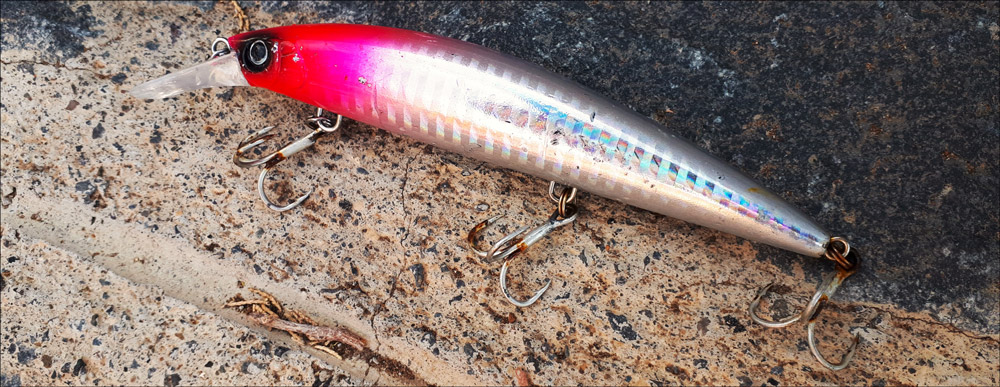
The beauty of a wobbler isn’t just in its enticing dance beneath the water but also in the craftsmanship and design that make it so effective. To ensure that your wobbler continues to entice fish for years to come, it requires a bit of TLC. From storage solutions to regular inspections, here’s how to keep your prized lures in impeccable shape:
📦 Storage: Protecting Your Investment
- Individual Compartments: Use tackle boxes with individual slots to prevent wobblers from tangling with each other. This protects the finish and preserves the integrity of the hooks.
- Away from Direct Sunlight: Store your tackle box in a cool, shaded place. Prolonged exposure to UV rays can fade the vibrant colors of your wobbler.
- Moisture Management: If you’ve been fishing in saltwater, ensure your wobblers are dry before storage. Consider using silica gel packs in your tackle box to ward off excess moisture and prevent rust.
💧 Cleaning: Keep the Shine Alive
- Freshwater Rinse: After every fishing trip, especially in saltwater, give your wobblers a quick rinse with fresh water. This prevents salt and grime build-up, which can damage the lure’s finish.
- Soft Cloth Wipe: Gently wipe each wobbler with a soft, lint-free cloth. This helps remove any residual dirt and restores the lure’s shine.
- Avoid Harsh Chemicals: Stick to mild soapy water if needed. Strong solvents can strip the paint and affect the wobbler’s performance.
🔍 Regular Check-ups: An Ounce of Prevention
- Hook Inspection: Dull hooks reduce your catch rate. Periodically check for sharpness and replace any that have lost their edge.
- Hardware Health: Ensure that the split rings, swivels, and other hardware components are free from rust and damage. These small components play a huge role in the lure’s action.
- Test the Action: Every so often, test your wobbler in a clear body of water. If its movement seems off, it might be time for a tune-up or replacement.
Your wobblers, with their graceful movements and vibrant colors, are more than just fishing tools—they’re an angler’s trusted companions. A little care goes a long way in ensuring they remain effective, looking good, and ready for your next big catch. 🌟🐟
🚫 Wobbler Woes: Common Mistakes and Their Fixes 🎣
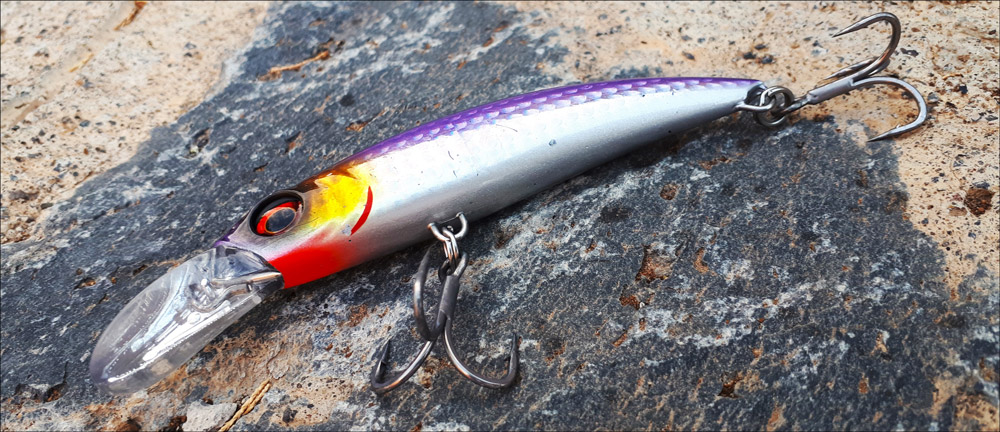
Every angler, whether novice or seasoned, can sometimes slip up when using a wobbler. While these lures are highly effective, certain common mistakes can undermine their potential. Let’s tackle these blunders head-on and ensure your wobbler fishing is as successful as it should be:
Not Adapting to the Environment 🌊
- Mistake: Sticking to the same wobbler regardless of water clarity, depth, or temperature.
- Fix: Study the water conditions and switch your wobblers accordingly. Clear water usually calls for natural hues, while murkier waters may benefit from brighter colors.
Overlooking Wobbler Action 🐟
- Mistake: Not paying attention to the wobbler’s movement, leading to a lack of strikes.
- Fix: Periodically test your wobbler in clear waters. If the movement seems off, adjust your retrieval method or consider changing the lure.
Ignoring Hook Maintenance 🔧
- Mistake: Continuing to fish with dull or rusty hooks.
- Fix: Regularly inspect and sharpen your hooks. A sharp hook increases the chances of a successful catch.
Fishing at the Wrong Depth ⬇️
- Mistake: Not adjusting the depth at which the wobbler is presented, missing where the fish are feeding.
- Fix: Experiment with different retrieval speeds or add small weights to modify the diving depth of your wobbler.
Not Being Versatile 🔄
- Mistake: Relying solely on a straight, steady retrieve every time.
- Fix: Mix up your retrieval methods. Incorporate twitches, pauses, and varied speeds to make the lure more enticing.
Storing Wobblers Carelessly 📦
- Mistake: Tossing wobblers haphazardly into a tackle box, leading to tangled hooks and damaged lures.
- Fix: Use a tackle box with individual compartments. Ensure wobblers are dry and free from salt residue before storage.
Mistakes are a natural part of the learning curve, but recognizing and correcting them early ensures a more fruitful fishing experience. With these tips in mind, you can make the most of your wobbler and enjoy many successful angling adventures. 🌟🎣
🏆 Insider Tips from the Pros: Unlock the Full Potential of Your Wobbler 🎣

Delving deep into the fishing community, we’ve gathered some exclusive pearls of wisdom. These aren’t just any run-of-the-mill suggestions; they’re bona fide pro tips that have been honed through years of experience. Let’s dive in!
The “Moonwalk” Technique 🌙
Tip: Give your wobbler a ‘walking’ movement, akin to Michael Jackson’s famous moonwalk.
How: Gently twitch the rod tip downwards in rhythm with your retrieval. This makes the wobbler dart side-to-side, imitating an injured baitfish—a tantalizing sight for any predator.
Seasonal Color Palette 🍁🌷
Tip: Just as fashion has seasonal colors, so do wobblers!
How: In spring, when fish are more active, opt for bright and vibrant colors. Transition to more muted, natural tones during fall when fish become more cautious.
Night Owl Advantage 🌜
Tip: Fish are less wary at night, offering an excellent window of opportunity.
How: Equip your wobbler with luminescent or glow-in-the-dark stickers. The added illumination in the dark can prove irresistible to fish.
The Sound of Success 🔊
Tip: Sometimes, it’s not just about how the wobbler looks, but how it sounds.
How: Some pros add small rattles or beads inside their wobblers. The subtle noise can intrigue fish and lure them towards the bait, especially in murky waters.
Dynamic Duo: Wobbler & Soft Bait 🪝
Tip: Combine the wobble of a hard lure with the softness of rubber bait.
How: Attach a soft tail or worm to the back hook of your wobbler. The mix of hard and soft textures can be more convincing to cautious fish.
Read the “Fish Mood” 🐟🔍
Tip: Pay attention to how fish are reacting.
How: If you notice fish following your wobbler but not striking, it’s time to change things up. Switch color, adjust retrieval speed, or try a different wobbler altogether.
Armed with these insider tips, you’re poised to elevate your wobbler fishing game. Remember, while these pointers are tried-and-true, fishing is as much an art as it is a science. Experiment, adapt, and most importantly, enjoy the process! 🌊🎣
Fishing, like any craft, is filled with nuances that can make a significant difference. By heeding the advice of those who’ve spent countless hours on the water, you’re giving yourself a competitive edge. Tight lines and happy casting! 🚣♂️🐟
🎣 Reeling It In: The Wobbler Lure Mastery 🌟
As we navigate the vast ocean of fishing techniques and tools, the wobbler stands out not just as a lure, but as a testament to the evolution of angling. The intricacies in its design, the vast array of options, and the countless strategies associated with it underline its undeniable potential in the hands of a skillful angler.
Fishing is both a science and an art form. 🎨 While understanding the mechanics and design principles behind a wobbler provides a solid foundation, the artistry comes alive when you’re out there on the water, feeling the rhythm of the reel, observing the water conditions, and syncing your movements with the natural world.
So, for all the budding anglers and seasoned professionals alike, remember that every cast with a wobbler is an opportunity to learn, adapt, and refine your technique. 🔄 The depth of knowledge we’ve delved into isn’t meant to be overwhelming but rather enlightening. The key is to embrace the learning curve, savor the challenges, and celebrate the victories, no matter how small.
Keep Casting and Experimenting! 🔄 Every water body, every weather condition, and indeed, every fish has a lesson to teach. With the wobbler as your trusted companion, you’re well-equipped to tap into the bounties beneath the water’s surface.
Remember, the journey to wobbler mastery is a blend of patience, observation, and continuous experimentation. So, rig up that wobbler, head out, and let the waters be your canvas. Here’s to countless catches and the joy of the perfect cast! 🎣🌊
Success in fishing, as in life, often lies in the details. The wobbler, with its rich history and potential, is a tool that can redefine your angling experiences. Dive in, immerse yourself, and most of all, enjoy every splash and ripple along the way. 🚣♂️🌟
📚 Dive Deeper with these Wobbler Fishing Resources! 🎣
The journey of mastering the art of wobbler fishing doesn’t end here. To truly grasp the intricacies and immerse yourself further, these handpicked resources can be your guiding light. From time-tested books to insightful workshops, there’s a treasure trove of knowledge waiting for you!
📖 Books
“Wobbler Wonders: A Century of Lure Evolution” by Jim Laker
A comprehensive look into the history and design transformation of wobblers over the decades. Packed with vivid photographs and detailed descriptions, it’s a must-read for history buffs and lure enthusiasts.
“Cast & Conquer: Advanced Wobbler Techniques” by Serena Mitchell
Dive deep into advanced casting techniques, retrieve methods, and the science behind why wobblers work so well with different fish species.
“Lure Lore: The Art and Science of Fishing Baits” by Greg Thornton
An encompassing guide that, while not exclusive to wobblers, provides a vast amount of knowledge on lure selection, design, and the behavior they induce in different fish.
📺 Videos
“Wobbler Mastery Workshop Series” on FishTech YouTube Channel
A series of instructional videos led by professional anglers demonstrating real-time casting, retrieval, and adaptation techniques with wobblers.
“Underwater Insights: How Fish See Wobblers” by AquaVision
Productions
An underwater camera captures the movement and allure of wobblers from a fish’s perspective, providing invaluable insights into how fish interact with these lures.
🏛️ Workshops
“The Wobbler Weekend Retreat” at Lake Harmony Fishing Resort
A two-day immersive experience where anglers can learn from seasoned pros, practice techniques in real-time, and even craft their custom wobblers.
“Lure Lab: Wobbler Design & Dynamics” hosted by Angler’s Craft
Community
A hands-on workshop focusing on the design principles of wobblers. Understand the physics behind their movement and even get a chance to paint and create your designs.
Embarking on the quest for wobbler wisdom? These resources are tailored to guide, inspire, and enhance your fishing endeavors. Whether you’re a novice or a seasoned pro, continuous learning keeps the thrill of the catch alive. Dive in, and may your fishing tales grow with every cast! 🎣📘🌊

I live in Tenerife (Canary Islands) for the last 10+ years and share my daily fishing experiences on my website. Many years of personal experience as a fisherman and the vast experience of my friends allow me to write professionally on any fishing topics (from choosing a flashlight and equipment to deep-sea fishing).
All of my advice is based on practical real-world experience and will be useful to both novice anglers and professionals. Read more about the author.
Affiliate Disclosure: FishReeler.org sometimes gets paid for listings, through sponsors or affiliate programs like Amazon, Ebay, Cabelas, Bass Pro Shop, Shimano, Daiwa, Rapala, Renn, Okuma, KastKing, etс. Clicking a link helps keep FishReeler.org free, at no extra cost to you!
About the author: Each article is verified by the fishing expert Sergio Smirnoff. The articles are written by professional and amateur fishermen with 20+ years of fishing experience.
Note: The views and opinions expressed in this article are those of the authors and do not necessarily reflect the official policy or position of any agency. The articles are for informational purposes only, share your opinions in the comments and join the fishing discussions, let's share our fishing experiences together!


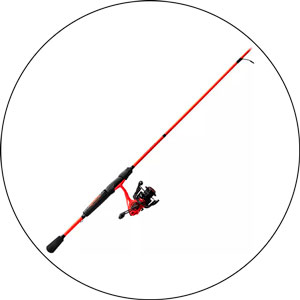

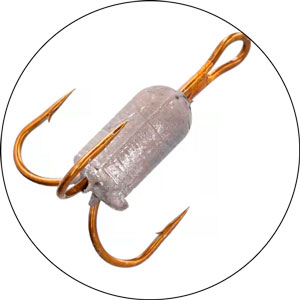
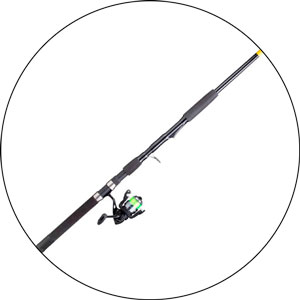
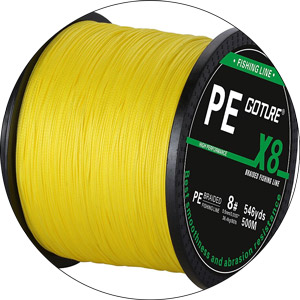
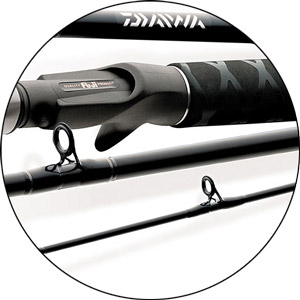
I liked your article, very valuable. Learned how to pick up and the technique of fishing on a hard wobbler. In the video, I see how best to “play” the wobbler to deceive the fish and make it bite and angry. You have to tug and up and down, to the side and to yourself. Visually saw and will master this skill. Just pulling even a perfect wobbler is not enough, especially during the day and in clear water.
I would like you to add more information from me on soft wobblers. They are more mobile in the water and therefore more like a really small fish. Buy these wobblers, which have an additional attachment on the jig head. Then it will last longer, will move properly in the water, and will not turn and get off the offset hook. Look carefully at my photo and everything will become clear. Thanks again.
I happened to read your article on wobblers for novice fishermen. Completely agree with it and will practically apply your advice. There’s a full and varied set of different wobbler designs. Some of them I have been using for a long time and have been successful. Your bias is more towards fishing from the ocean, and I live near a large lake. Such tackle works in freshwater as well. Write in more detail your advice. Some things you have to guess for yourself.
Your article contains a lot of text and video about the jig fishing techniques, but very little about how far to cast silicone or plastic light bait to successfully catch fish. It is well known that to throw a bait less than 10 grams you need a special rod and fishing skill. In order to do this, simply invented additional equipment – a bombarda. Bombard allows you to move the bait up to 100 meters from the shore. I will show whoever is interested how the bombard can be assembled. This design strengthens it (it does not bend and break the center tube due to the strong line) and makes it easy to quickly attach to the main line and change leads. The most successful fishing with this rig is when the bombard is near the bottom of the body of water. To do this, you have to wait at least 1 minute after casting and then only pull it.
[…] You have to catch fresh fish. […]
Your content valuable for me. I have learnt how to pick up and the technique of fishing on a hard wobbler.